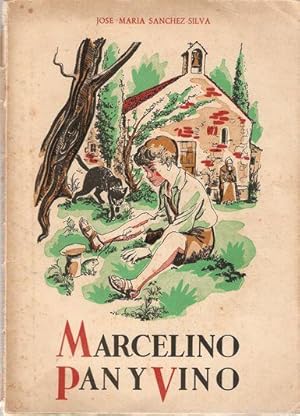Marcelino Pan Y Vino Libro
Marcelino pan y vino is the perfect book that 'hiddenly' describes the time of the dictatorship of General Franco. All the most characteristic features of Franco's dictatorship are included in Marcelino pan y vino.Censorship- Marcelino pan y vino doesn't use any bad word or any sex scene is described. Marcelino pan y vino is the perfect book that 'hiddenly' describes the time of the dictatorship of General Franco. All the most characteristic features of Franco's dictatorship are included in Marcelino pan y vino.Censorship- Marcelino pan y vino doesn't use any bad word or any sex scene is described. Tienes una cara de hambre Marcelino Pan y Vino- Personajes study guide by MartellH131 includes 12 questions covering vocabulary, terms and more. Quizlet flashcards, activities and games help you improve your grades.
Marcelino Pan Y Vino Libro En
Marcelino is an orphan who was abandoned as a baby at the doorstep of a small Franciscan monastery. He grows up to be a mischievious little boy who has the run of the monastery. He only place he’s not allowed to visit is the attic.
Marcelino Pan Y Vino Resumen

Of course, he sneaks up there, anyway. In the back room, he finds a life-size crucifix. Marcelino offers the Jesus statue some bread. Marcelino returns to visit whenever he can, always with bread and wine.This 1953 book has become a classic of Spanish children’s liter Marcelino is an orphan who was abandoned as a baby at the doorstep of a small Franciscan monastery. He grows up to be a mischievious little boy who has the run of the monastery.
Marcelino Pan Y Vino Libro Resumen
He only place he’s not allowed to visit is the attic. Of course, he sneaks up there, anyway. In the back room, he finds a life-size crucifix. Marcelino offers the Jesus statue some bread. Grand tour season 3 release date. Marcelino returns to visit whenever he can, always with bread and wine.This 1953 book has become a classic of Spanish children’s literature (and, in 1955, of Spanish film).